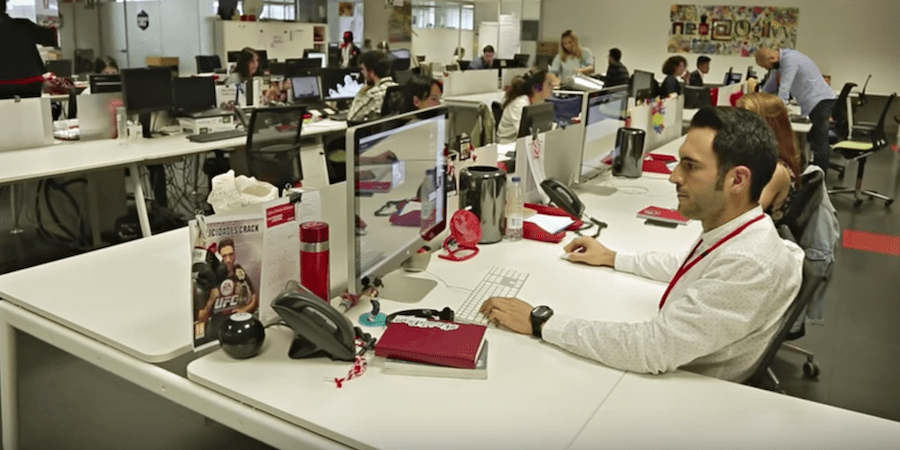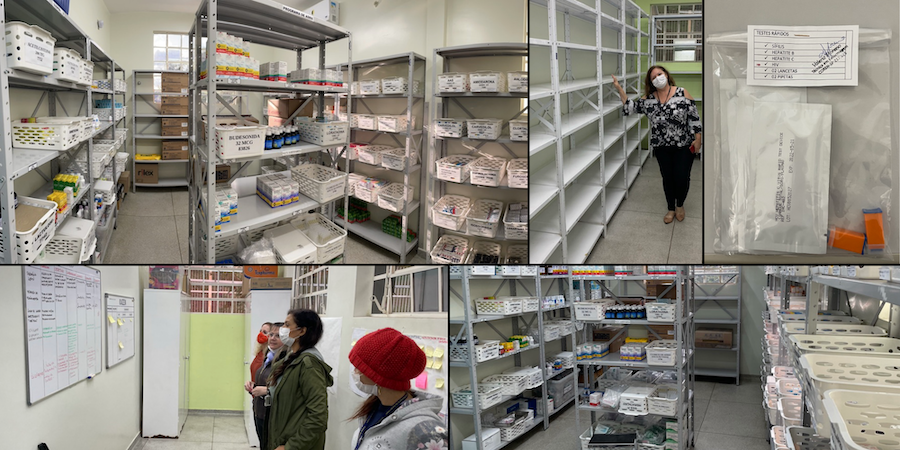
The role of management in a firm: developing better people
FEATURE - Develop your people if you want to develop a better (lean management) system in your business. This is the key message of this article, which looks at the role of management in an organization and in society.
Words: Michael Ballé and Jim Huntzinger
In his last book, Managing in the Next Society, Peter Drucker asks the fundamental question on the role of management in a knowledge society.
Companies don’t get, he claims, that knowledge workers are not simply “employees.” They are not “subordinates,” he writes. They’re “associates.” Within their area of knowledge, they’re supposed to do the telling. And companies don’t quite know how to manage them as they don’t fit the traditional taylorist approach that the system tells people to follow the “one best way.” Drucker saw clearly that in a knowledge-based organization, the employee’s individual productivity is what makes the whole productive – not the system.
What, then, is the role of management if not to apply the “system” to workers?
Lead With Respect was written with this question squarely in mind. In essence, the book is the lean answer to Peter Drucker’s challenge: it describes how lean practices, derived from the Toyota Production System’stradition, resolve the tension between the full engagement and expertise of craftsmanship and the imperative of economies of scale.
Training Within Industry (TWI) is a large part of this tradition as Toyota adopted TWI programs in the 1950s and by and large kept them going, essentially unchanged, to the present day. The deeper question the book addresses is: “What is the meaning of management in 2014 and beyond?”
Lead With Respect is set in an IT company working for a manufacturing corporation, a clever way for the authors to explore the boundaries between knowledge work and production (for a review of the book, click here). Indeed, our contention is that any work is knowledge work, even if the knowledge component varies from small to large.
If we start from the workplace, another way of asking this question would be: what have 20 years of lean practice taught us about management in a knowledge society? In sync with Drucker’s insight, the broad change of perspective lean taught us (and, indeed, this is a hard lesson even for lean practitioners) is to start with the individual and not with the system. In TWI terms: “people must be treated as individuals.” No one understands lean until they’ve clicked on “one second waste”: one step, one second, one cent. One second waste seems farfetched in relation to the company’s bottom-line, but it is very meaningful from where the worker stands. To workers doing repetitive cycles, whether production, maintenance or office work, seconds and minutes are exactly where they see their time being wasted. The problems that take hours to solve are rare and usually tackled by management. The mastery of work is in the seconds.
Understanding why a person wastes one second and not another is critical. Understanding why and how work makes a person lose one second in some circumstances and not others is the monumental change in managerial mindset that lean thinking brings. As Drucker explains, this is precisely the addition of these personal “one second” wastes that make up productivity in a knowledge society – this is the level of understanding at which we need to operate to make the system as a whole productive.
What does this mean in practice for managers?
Some lessons derive straight from TWI, while others have been extended by lean thinking and practice, but when it comes down to it, the top priorities of managers in a knowledge society are:
- Training one’s direct reports by teaching them the skill of improvement;
- Figuring out what value means for customers and for employees;
- Creating a work environment geared to on-the-job learning;
- Aligning individual success and collective success.
Managers are now supposed to manage the “system” (whether IT or procedures) and employees have to learn how to work directly from “the system.” In complete negation of all we’ve learned about tacit knowledge versus explicit knowledge, systems are now supposed to be so explicit they don’t need to be taught, and, on the other hand, they are now so complex that they do need to be managed. But TWI programs acknowledge the need that any supervisor must know the job well enough to teach it to their workers, and that they need help with the actual training method.
The first managerial revolution brought by lean practice is to assert that training one’s direct reports is the manager’s first priority.
The degree to which managers need to know the work varies, and it is their individual choice. But training subordinates is mandatory in order to generate individual productivities. End of story. This simple but difficult first mandate explains why so many organizations shy away from true lean thinking – their senior management feels the organization is now so far from being able to do that, there must be a way around. There isn’t. The further down you go the road of having administrative managers who don’t understand the work they manage well enough to teach it, the deeper you fail. First, take responsibility for training all your direct reports – then turn to TWI to learn how to train them.
The trick to training direct reports in a knowledge society when the worker actually knows more than the manager is to ask them for specific step by step improvements, and teach them how to. Improvement will immediately highlight both the gap in the understanding of value and the technical difficulties encountered, which will create a communication space to understand what really is going on and what obstacles people face in practice (often not at all what you’d expect). Teaching improvement is a direct way of learning about the work from the best, in order to be able to steer less gifted colleagues to what they need to learn – without having to become as expert as the workers themselves at what they do every day (which, in today’s organizations, is very unlikely).
TWI also makes the quaint assumption that value is well understood and thus the question is about improving the way the job is carried out. In today’s world, this assumption simply can’t be made at any point. External change is faster than internal change, customers want to be treated as individuals as well, and “value” is always in flux.
The second mission of the manager is therefore to constantly question what value actually means for customers and how workers build value into their product, service or software.
Value is tricky because what customers are ready to pay for usually differs widely from what they tell you they’d like. Value, therefore, needs to be studied daily through ongoing experimentation to figure out what customers really want as opposed to what they think they fancy. From then on, managers need to share their understanding of value with each individual worker to observe and discuss work and see which aspects are valuable and which less so – and thus be able to better steer the conversation about improvement.
Thirdly, visual management is a unique know-how that emerges out of lean tradition in order to make it easier to have employees learn on the job every day everywhere. By visualizing work in a way that reveals problems, one can face them as a team and learn from them, rather than suffer from them as distractions or frustrations (or risk of “kill the messenger” knee-jerk reactions from management).
Problem-based learning is in lean (as in medicine) the main technique to develop people’s expertise – and also their ability to work with one another.
Specific practical tools such as kanban (whether on the shop floor or in the office), standardized work and andon create the learning interaction by highlighting without blame when something goes wrong. Without such visual tools in place, the presence of management on the shop floor can become more disruptive than helpful, as managers won’t share with workers the understanding of which problems need to be addressed right now.
Last but not least – indeed, we should probably start with this – morale matters enormously in knowledge work.
How people feel about their work, their bosses and themselves greatly affects their work. Managers must therefore strive constantly to align the person’s interests (and problems) with the firm’s success. TWI offers a very pragmatic starting point by teaching managers to address employees’ problems, even personal ones, in order to create an atmosphere of trust. Trust is in fact the key to morale. Trust in the managers’ expertise. Trust in their fairness at work. Trust that the success of every single job will contribute to the success of the company, and that the firm’s success will result in rewards and recognition for the person.
“What’s in it for me” must align with “what’s in it for the business,” just as the business must show concern about tackling obstacles to individual success in order to face the barriers to business success.
Lead With Respect illustrates through a narrative, which nearly anyone working in business today can relate to, how managers learn to develop their people in order to build a better system (business model) as a result; first by building better knowledge and skills in their people.
The foundational building block is people: they’re not employees, they’re people. And TWI is a foundational skill that develops the bedrock knowledge for people to actively engage in building a better system. Develop people so that a better system will result. Lead With Respect is the story of how to do this. It can be your story.
Note: TWI is illustrated throughout Lead With Respect, but not overtly. Can you find it in the story?
THE AUTHORS


Read more


FEATURE – With lean thinking, Madrid-based Neo@Ogilvy is hoping to create a stronger connection with customers, thus learning to create value for them and redefining the overall purpose of marketing.


FEATURE – In a market where products become obsolete very fast, this Toyota supplier has learned the importance of staying true to its heritage and developing know-how and people’s capabilities.


FEATURE – As inflation bites, the author offers us an insightful take into what it really means to understand a company’s costs. Hint, it doesn’t involve passing them on to customers.


FEATURE – In this article, we hear about how the lean successes of one hospital inspired an entire healthcare authority to introduce changes to their processes.

